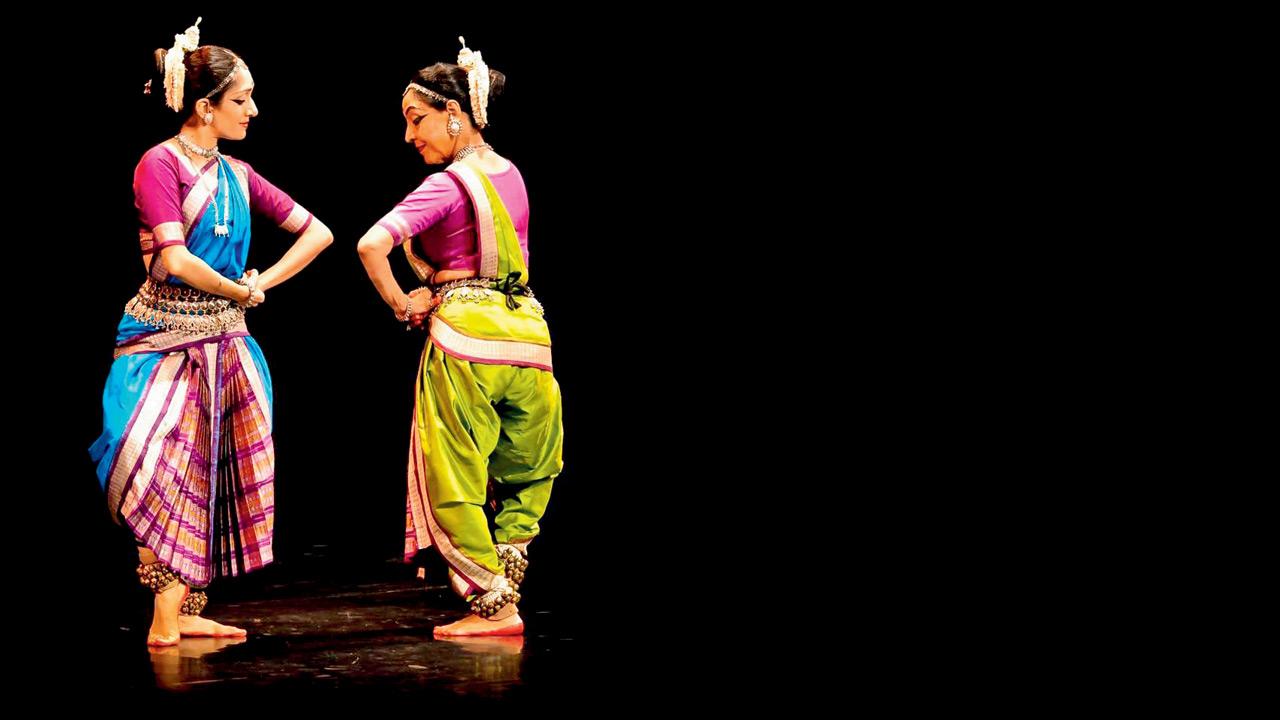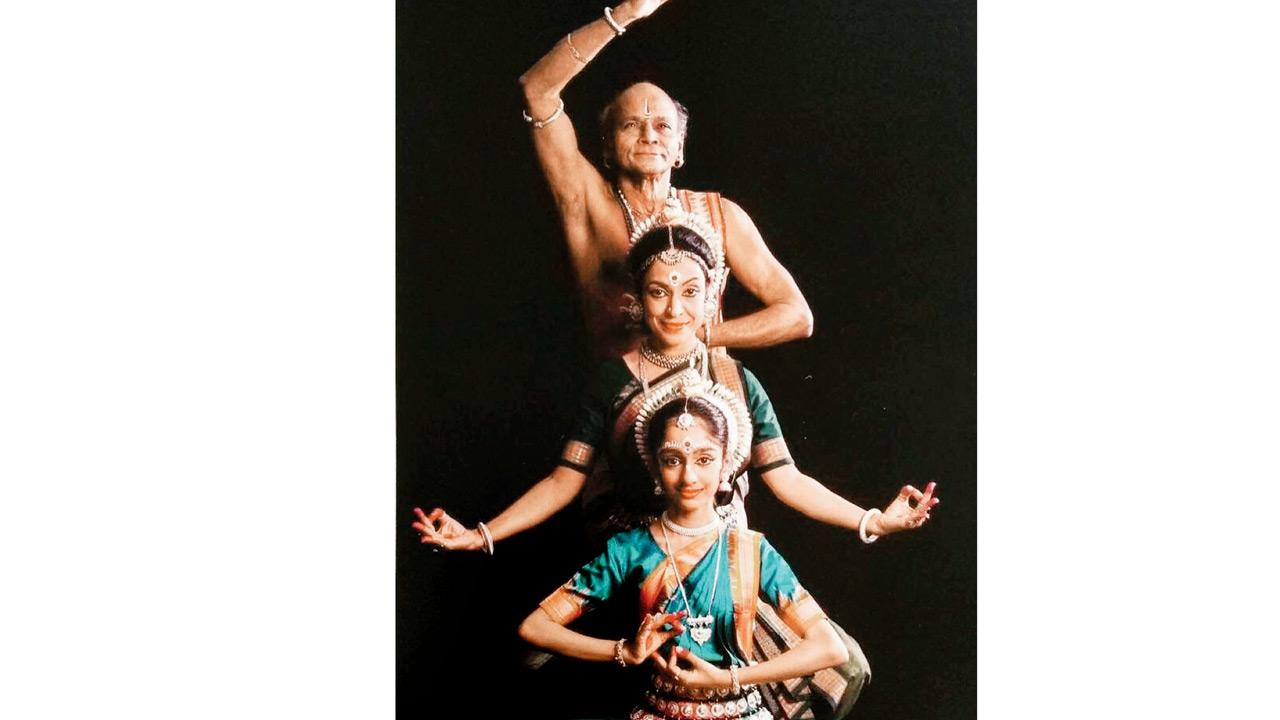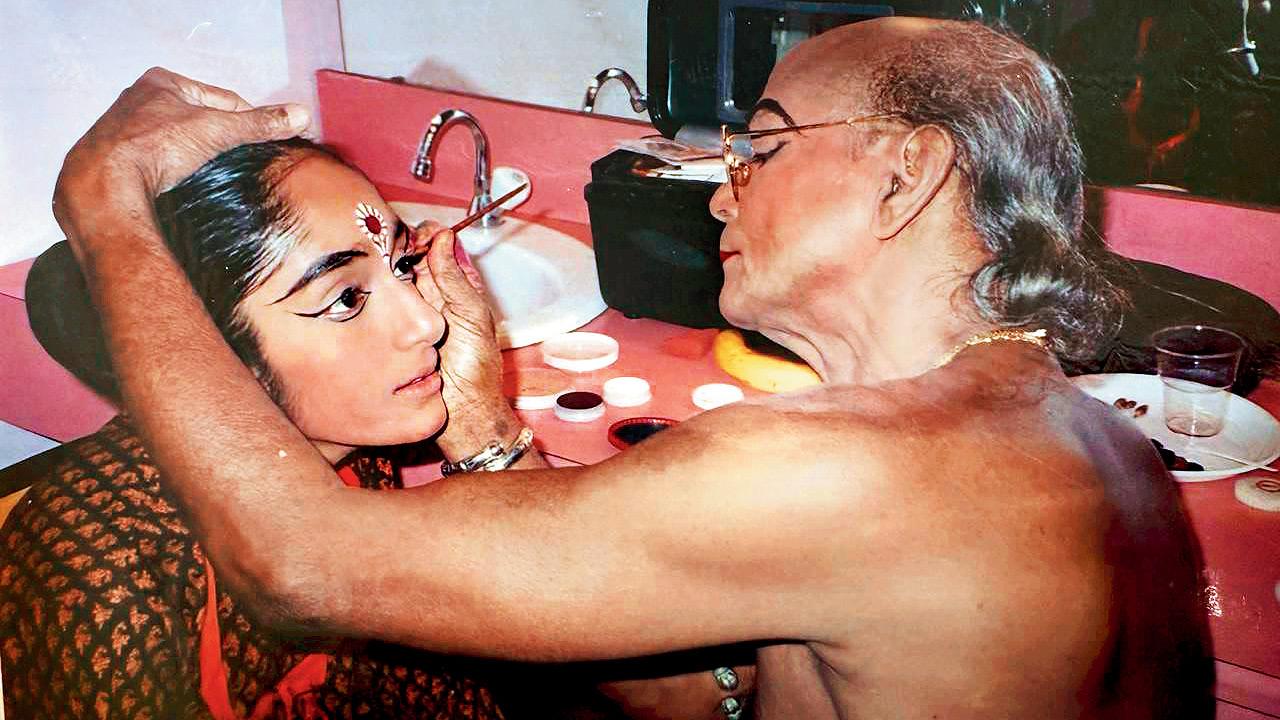Odissi artiste Arushi Mudgal opens up about training under the tutelage of her aunt, Odissi exponent Madhavi Mudgal, and how it will inspire her performance in the city today

Arushi (left) and Madhavi Mudgal during a previous performance. PICS COURTESY/ARUSHI MUDGAL
I don’t remember a time when Madhavi ji was just my aunt, and not my guru. There exists only one integral relationship between us,” reveals Arushi Mudgal, who grew up under the wing of Madhavi Mudgal around the same time the veteran artiste was being conferred with the Sangeet Natak Akademi award and a Padma Shri. Learnings from her many teachers, including her aunt, and her father, veteran Hindustani musician Madhup Mudgal will reflect in Athaah, her Odissi performance today at a SoBo venue. Excerpts from the interview.

A dated photograph featuring (from top) Kelucharan Mohapatra, Madhavi and Arushi Mudgal
MID-DAY: Growing up in the midst of esteemed artistes, do you remember your first tryst with dance?
Arushi Mudgal: I was completely surrounded by music and dance. When I was all of two years old, I would stumble into practice sessions at home and instinctively move to the rhythm. When I turned four, I started training under Madhavi ji while simultaneously learning Hindustani classical music. One of my first and most memorable performances came my way in Delhi when I was in the sixth grade — the legendary Indian classical dancer Kelucharan Mohapatra was in the audience. It was an equally exciting and intimidating prospect. At the end of the performance, guru Kelucharan walked up to the stage and gave me a tight embrace in appreciation. Ever since, I have taken the stage all around the world. But that memory remains special.
MD: You have previously described Madhavi Mudgal as a perfectionist. How was it training under a guru of her calibre?
AM: I stand by my words [laughs]. Apart from the actual performance on stage, Madhavi ji was extremely particular about the allied arts like costume design, stage décor, even minute details like how a dancer enters and exits the stage. When I am approached by a venue for a performance, I often find myself ensuring I am in the loop of how I want things to unfold on stage. Perhaps it is something I inherited from my mother and Madhavi ji.

Kelucharan Mohapatra assists a young Arushi Mudgal backstage
MD: What can we expect from Athaah, since you call it a reimagination of the Odissi repertoire?
AM: I believe that the love between Radha and Krishna is popularly considered ‘relatable’ in comparison to that of Shiva-Parvati. One of the four pieces I will be performing is the Parvati Lasyam. Based on an existing text, it imagines the premise leading to Parvati’s dance [a change from Shiva’s much-discussed tandav]. Here, Shiva becomes the beholder. The beauty of Odissi is that no matter how imaginative your interpretation is, it finds a place in the dance form. In that sense, my performance is essentially still Odissi.
MD: As an Odissi guru to young artistes now, do you see reflections of your aunt’s style in your approach to teaching?
AM: It is inevitable. Especially because Madhavi ji’s style was ahead of its time. There are many concepts in the physicality of the performance — for instance the concept of core or the centre of body — that she had identified before they became mainstays in teaching curriculum. I would describe my approach to a student under my tutelage as a culmination of all my gurus’ teachings with a tinge of my own interpretations.
MD: Has the students’ approach to Odissi evolved simultaneously? For instance, what do young classical dancers today think of the hallowed guru-shishya parampara?
AM: As long as there is a teacher and a student, guru-shishya parampara will endure, albeit through different definitions. That being said, I believe the tradition should be open to discretion; to each his own. If it works for you — like it did for me — it is a beautiful relationship. If it doesn’t, reject it.
ON Today; 6.30 pm
AT Experimental Theatre, NCPA, Nariman Point.
LOG ON TO ncpamumbai.com
ENTRY Rs 180 onwards
 Subscribe today by clicking the link and stay updated with the latest news!" Click here!
Subscribe today by clicking the link and stay updated with the latest news!" Click here!










